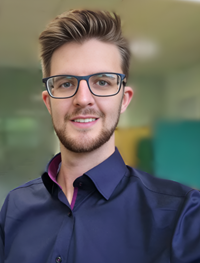15-19 June 2025 | Vilnius, Lithuania
Course report
My name is Kieran McAuley, and I am a medical physicist at Saint Luke’s Radiation Oncology Network (SLRON) in Dublin, Ireland. I have been working in the field of radiotherapy for approximately five years. After I completed the CAMPEP accredited residency program at SLRON, I transitioned into a clinical physicist role, which I have held for the past three years. My professional interests include automation in treatment planning and the development of complexity metrics to evaluate treatment plan quality and reduce pretreatment patient-specific quality assurance (PSQA) measurements. A significant aspect of my role involves working closely with treatment planning systems (TPSs) to support clinical workflows. I enrolled in this course to deepen my understanding of the physics that underpins dose calculation algorithms, the commissioning of TPSs, and the development of optimised PSQA workflows.
This course provided a comprehensive and well-structured overview of dose modelling and its verification in external beam radiotherapy. It began with the fundamentals of radiation physics and progressed through a wide range of advanced topics, including multisource modelling, patient characterisation, detector systems, and TPS QA.
Each day began with interactive multiple-choice questions that reviewed the material from the previous day. This was an effective strategy for reinforcing key concepts, identifying knowledge gaps, and encouraging discussion among participants. I particularly appreciated the opportunity to revisit core physics principles, which laid a strong foundation for more advanced topics. I enjoyed the fact that the curriculum addressed both current and emerging challenges in radiotherapy physics. Topics such as assessment of plan complexity, dose-to-water vs. dose-to-medium calculations, and considerations regarding online adaptive radiotherapy were particularly engaging and offered valuable insights that can be directly translated into clinical workflows at my hospital.
The lectures, which were delivered by respected experts in the field, were content-rich, and the addition of hands-on practical sessions provided opportunities to engage with complex topics in an accessible and straightforward way, deepening my understanding of the area.
One of the most valuable aspects of the course was its in-person format, which provided a rare opportunity to network with colleagues from across Europe and beyond. These interactions offered fresh perspectives on institutional practices and served as useful benchmarks for evaluating our own workflows.
Overall, the course exceeded my expectations. I found every lecture clinically relevant, and the faculty were engaging, knowledgeable, and approachable. Key takeaways for me include the importance of maintaining a critical approach to dose-calculation algorithms and understanding their limitations, as well as applying the knowledge gained on detector systems to support the commissioning of several new linear accelerators within our network.
I would strongly recommend this course to anyone in the field, regardless of their level of experience. It serves both as an excellent refresher on fundamental principles and a practical check to ensure that your clinic is aligned with current best practices. The concepts covered are so central to radiotherapy that if we, as physicists, don't fully understand them, then no one else in the clinic will.

Kieran McAuley
Medical physicist
St Luke’s Radiation Oncology Network, St Luke’s Hospital,
Dublin, Ireland
kieran.mcauley@slh.ie